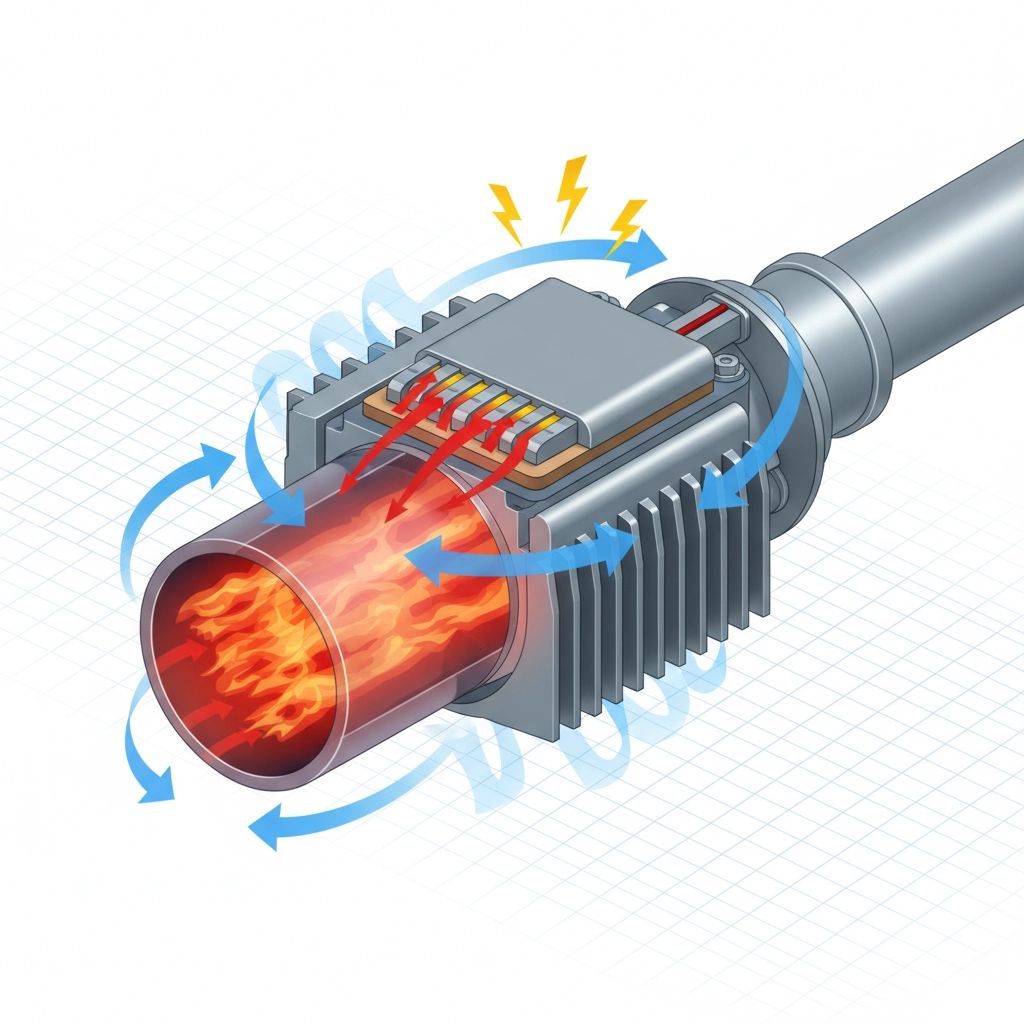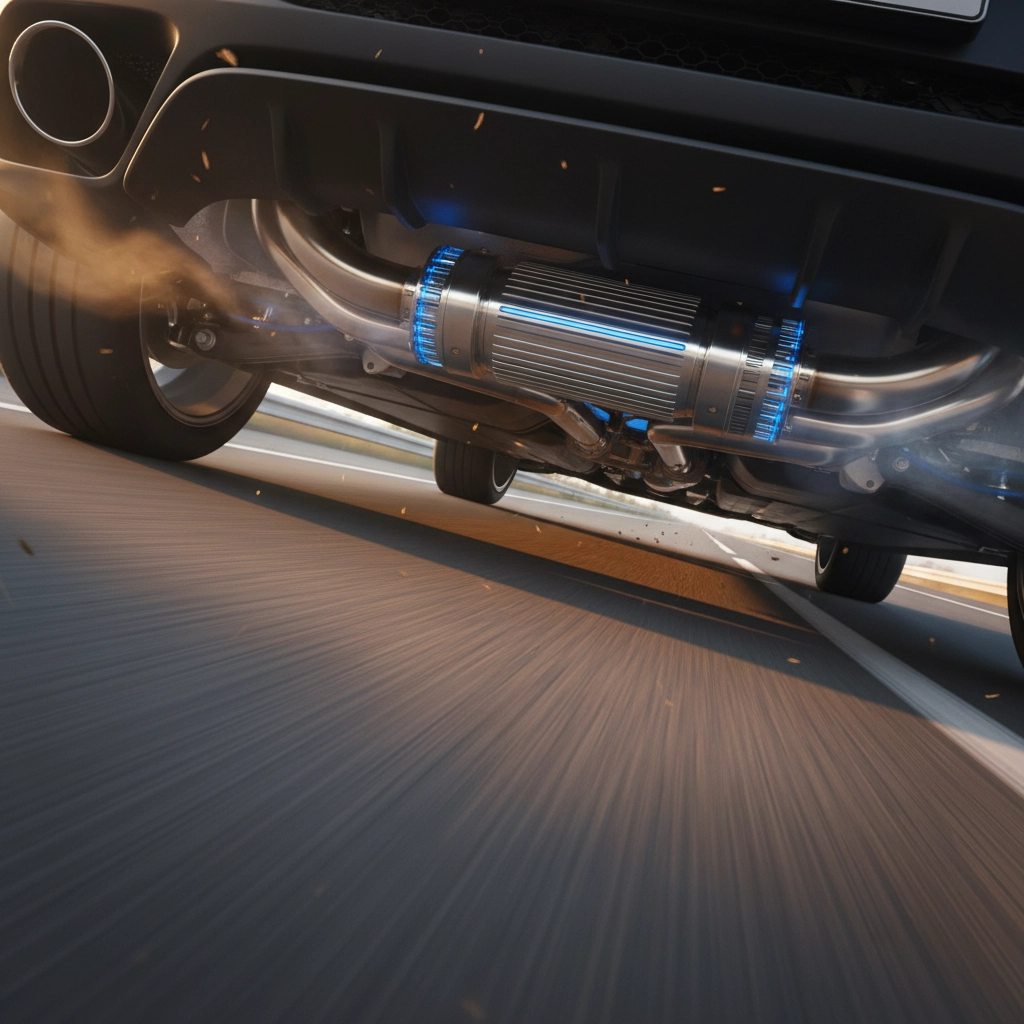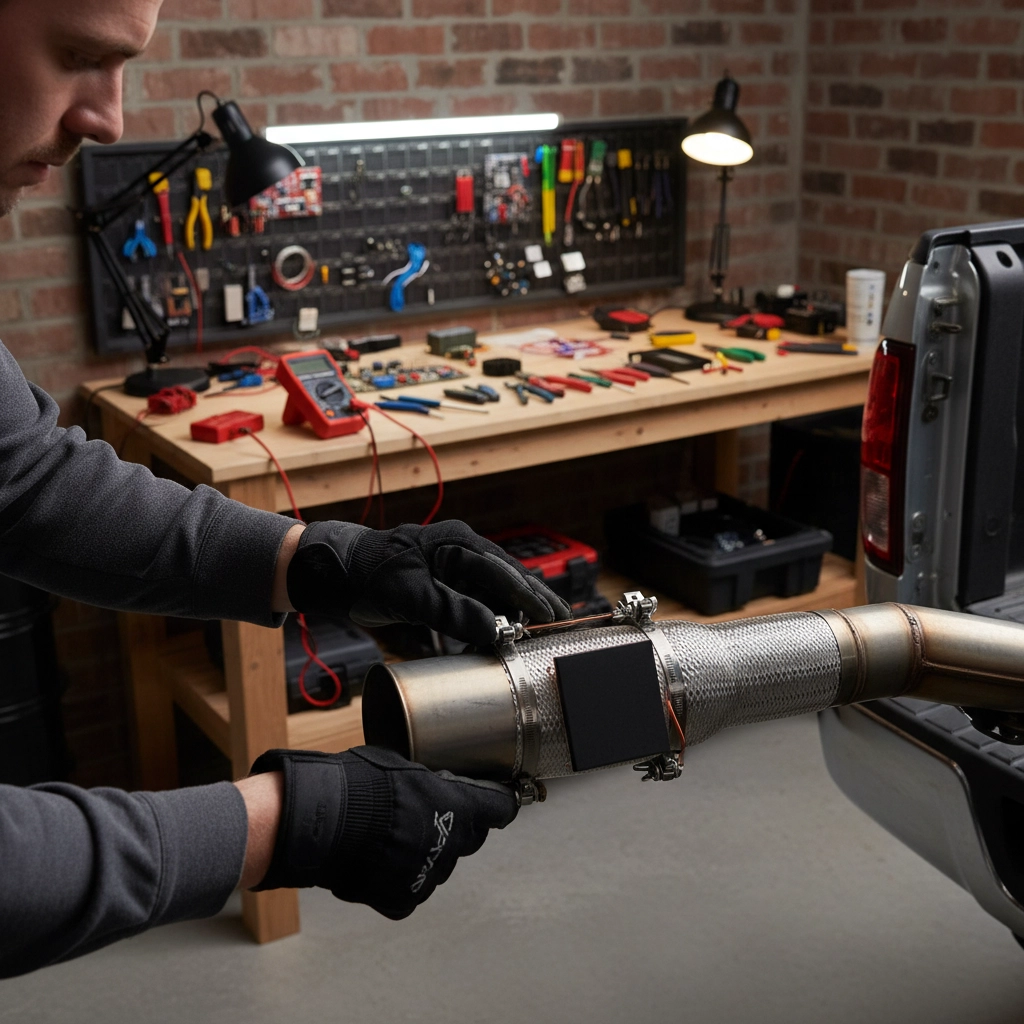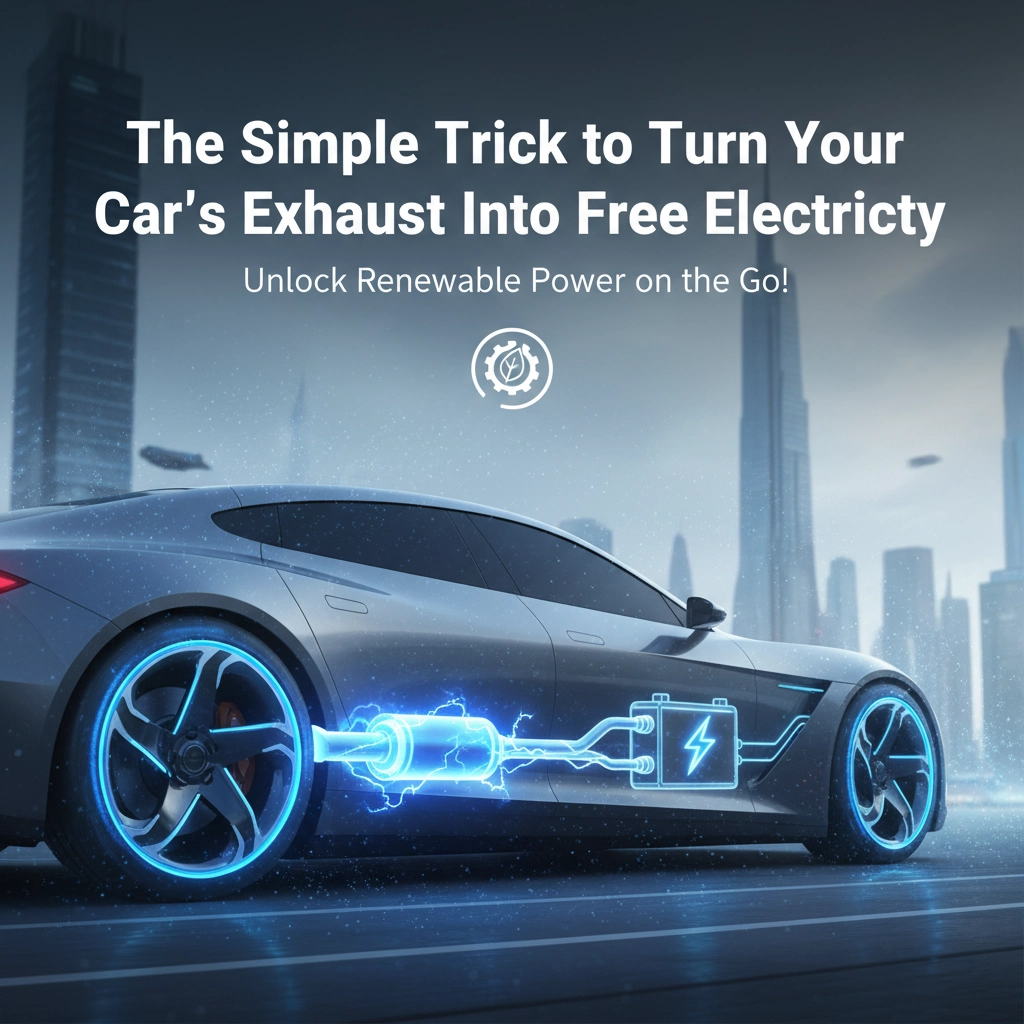What if I told you that your car is literally throwing away enough energy to power your entire home's lighting? Every time you drive, about 75% of your fuel's energy gets wasted as heat. Most of it just shoots out your tailpipe and disappears into thin air. But here's the crazy part – scientists have figured out how to capture that wasted heat and turn it into free electricity.
This isn't some pie-in-the-sky concept either. Researchers are already building working prototypes that can generate enough power to charge your phone, run your car's electronics, and even contribute back to the electrical grid. The best part? The technology is simple enough that you can actually build a basic version yourself.
How This Actually Works
The magic happens through something called the thermoelectric effect. Don't worry – it's way simpler than it sounds. Basically, when you have a hot side and a cold side separated by special materials, electrons start moving from hot to cold. That movement creates electricity.
Think of it like a tiny power plant sitting on your exhaust pipe. Your hot exhaust gases heat up one side of the device, while the outside air keeps the other side cool. The bigger the temperature difference, the more electricity you get.

Here's what makes this so brilliant: your exhaust pipe is already super hot (we're talking 300-600°F), and there's plenty of cold air rushing past it while you drive. It's the perfect setup for generating power without adding any extra fuel or complexity to your engine.
The devices that do this are called thermoelectric generators, and they're basically semiconductors arranged in a specific pattern. When heat flows through them, they create voltage. No moving parts, no maintenance, no noise – just free electricity from heat that was going to waste anyway.
The Science Behind the Magic
Your car's engine is basically a controlled explosion machine, but it's terrible at its job. Out of every gallon of gas you burn, only about 25% actually moves your car forward. The other 75% becomes waste heat that gets dumped through your exhaust system and radiator.
That's a massive amount of energy we're talking about. A typical car engine produces enough waste heat to power several homes. Until recently, there was no practical way to capture it – but thermoelectric technology has changed everything.
The latest research uses something called bismuth-telluride semiconductors. These materials are incredibly efficient at converting heat differences into electricity. Researchers have created systems with special heat exchangers that wrap around your tailpipe, capturing as much thermal energy as possible.

The real breakthrough came when scientists figured out how to maintain the temperature difference without using extra cooling systems. They designed fin-like structures that use the air rushing past your car to keep the cold side cool. It's like having a built-in air conditioning system that makes your electricity generator work better.
Real-World Results That'll Blow Your Mind
The numbers from actual testing are pretty impressive. Here's what researchers have achieved so far:
• 40 watts of continuous power during normal driving – enough to keep your phone charged indefinitely
• 56 watts at highway speeds when there's more airflow for cooling
• 146 watts in specialized applications like helicopter exhausts
• 3% efficiency in basic DIY setups, which translates to about 1.3% better overall fuel economy
To put that in perspective, 40 watts is enough to power a decent LED light bulb. That might not sound like much, but it's completely free energy that would otherwise be wasted. Plus, these are early-stage prototypes – the technology is only going to get better.
I remember reading about a guy who built a simple version using basic thermoelectric modules from Amazon. He mounted them on his truck's exhaust pipe and connected them to a small battery pack. During his daily commute, he generated enough power to keep his work tablet and phone charged all day. The whole setup cost him less than $200 and paid for itself in about six months just from not having to plug his devices in at home.

The environmental impact could be huge if this technology goes mainstream. Even a modest improvement in fuel efficiency across millions of vehicles would significantly reduce greenhouse gas emissions. And since the electricity comes from waste heat, it's essentially carbon-neutral power generation.
Getting Started (DIY vs Commercial)
You've got two main paths if you want to try this yourself. The DIY route is surprisingly accessible, while commercial systems offer much better performance.
For the DIY approach, you can buy thermoelectric generator modules online for about $30-50 each. You'll need several modules, some heat-conducting paste, mounting hardware, and a basic charging circuit. The whole project might cost $150-300 depending on how fancy you get.
The key is finding the right spot on your exhaust pipe – you want it hot but not so hot that it damages the electronics. Most people mount their systems on the exhaust pipe a few feet back from the engine, where temperatures are manageable but still plenty hot for good power generation.

Commercial systems are much more sophisticated. They use optimized semiconductor materials, professional heat exchangers, and advanced electronics to maximize power output. These systems can integrate directly with your car's electrical system and even contribute power back to the engine's alternator.
The downside is cost – professional systems can run several thousand dollars. But for fleet vehicles or long-distance drivers, the fuel savings and reduced wear on the alternator can make them cost-effective pretty quickly.
Installation is usually straightforward for both DIY and commercial systems. Most clamp directly onto your existing exhaust pipe without requiring any permanent modifications. You can remove them anytime and even transfer them to a different vehicle.
What's really exciting is seeing major automakers starting to experiment with built-in thermoelectric systems. BMW, Ford, and several others have announced research programs exploring factory-installed exhaust heat recovery. Within the next few years, this technology might become as common as catalytic converters.
Have you ever thought about how much energy your car wastes every time you drive, and what other "free" energy sources might be hiding in plain sight around us?







